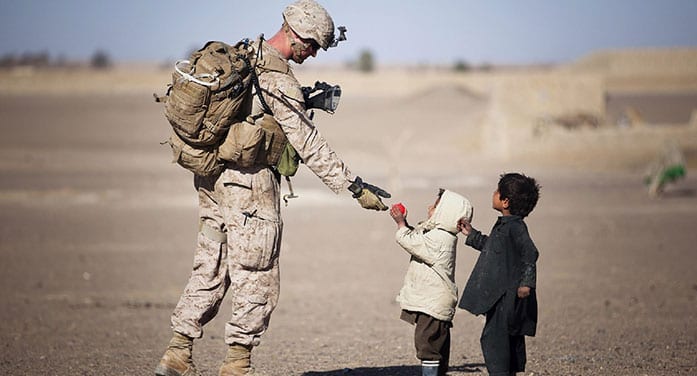 When discussing global issues, there’s a proverbial, weaponized elephant in the room. The topic is central to human suffering yet we seem unwilling to discuss it: the military-industrial complex.
When discussing global issues, there’s a proverbial, weaponized elephant in the room. The topic is central to human suffering yet we seem unwilling to discuss it: the military-industrial complex.
There’s a myth that there are good guys and bad guys and if we blow up the bad guys, the world will be safer.
But the last time civilians living in Western Europe were victimized by the violence of war was in the Second World War.
In an effort to avoid another such atrocity, we’ve made tremendous progress in learning to preserve peace in Europe.
The problem is that these countries, and the United States and Canada, don’t have an issue exporting these horrors to other parts of the world. This becomes even more serious as the survivors of the Second World War become fewer and fewer in number.
In December 1998, Labour Party MP Tony Benn addressed British Parliament. He was born in London in 1925 and remembered well the impact of Luftwaffe attacks on his city. He pointed out how this strategy backfired for the Nazis by increasing British resolve to win the war.
Benn made clear to younger parliamentarians that it’s naïve to expect people of the Middle East to back down after coalition bombings of their homes. They too love their children and their families, and such attacks only strengthen their resolve.
Given the rise of ISIS and the perpetual state of conflict in the Middle East, Benn seems to have been correct.
Examining conflict around the world, it’s quite clear that the only people profiting are those who produce and sell the weaponry.
Many criticize the failure of the United Nations to preserve global peace. Upon closer examination of the structure of this organization, one notices the powerful influence of the Security Council. The five permanent members of the council have veto power over all resolutions put forward. These five members are Russia, China, Great Britain, France and the United States, and they are among the world’s largest producers of weapons.
After the atrocities of the Second World War, society developed clearer and more stringent definitions of war crimes. This is referred to as international humanitarian law and one of its cornerstones is the protection of civilian populations.
Yet the International Committee of the Red Cross points out that “During the past 60 years the main victims of war have been civilians.” Despite the development of highly sophisticated ‘smart bombs’ and the use of ‘precision drone warfare,’ this trend isn’t shifting.
The arms industry is also rife with corruption. For example, in a 2019 Congressional hearing, U.S. Rep. Alexandria Ocasio-Cortez pointed out that a military contractor charged American taxpayers $1,443 for a part that it cost $32 to produce.
If we can safely conclude that military spending doesn’t make the world safer, then what does bring peace and how much does it cost?
Few would argue the benefits of a good education. Nobel Peace Prize laureate Malala Yousafzai has pointed out that if every country cut their military expenditures for eight days a year, it would save enough money to allow every child in the world to get a free education to Grade 12.
Every nation has a right to have a security force to protect its citizens. But it’s a myth perpetrated by corrupt corporatists that investing in their grossly overpriced military technologies will bring us security.
We need mutual respect, education, health care and sustainable development. Peace thus achieved will cost a fraction of what we spend on our militaries.
Troy Media columnist Gerry Chidiac is an award-winning high school teacher specializing in languages, genocide studies and works with at-risk students. For interview requests, click here.
The views, opinions and positions expressed by columnists and contributors are the authors’ alone. They do not inherently or expressly reflect the views, opinions and/or positions of our publication.
© Troy Media
Troy Media is an editorial content provider to media outlets and its own hosted community news outlets across Canada.

